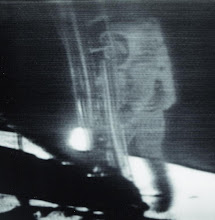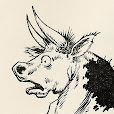


Some time ago I posted a picture of an antique brick with incised features, and promised to show another sculpture from the same place. So here's to make good on that pledge.
A friend who owned a second-hand store was called to the home of an older African American lady who was moving, to see if there was anything he wanted to purchase. The house was in a neighborhood directly across from the old brick-making plant in Milledgeville, GA. He found this crude effigy of an emphatically male figure on top of her refrigerator. When he asked her about it, she told him that it had been made by an uncle who worked at the brick plant, and given to her when she was 14 years old. She called it a "Get A Man," and said its purpose was to help her attract a suitable mate.
That's the way the story was told to me.
The figure is made of the dense white clay that's used to make fire bricks, which are used to line fireplaces and furnaces. The maker pressed in two small ceramic chips, like from a dinner plate, at the eyes. The sculpting is partly hand-molded and pinched, and the legs and feet are carved. When it was fired in the industrial kiln, the chips melted. I can't remember whether the brown color of the hair and lips was a glaze or paint.
My opinion is that this is a modern survival of the same human impulse evidenced by the Venus of Willendorf and other fertility figures, male and female, in cultures all over the world, stretching back to time immemorial. And one hell of a piece of folk art.



































